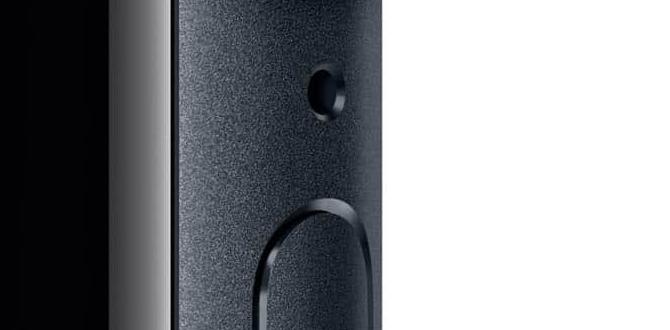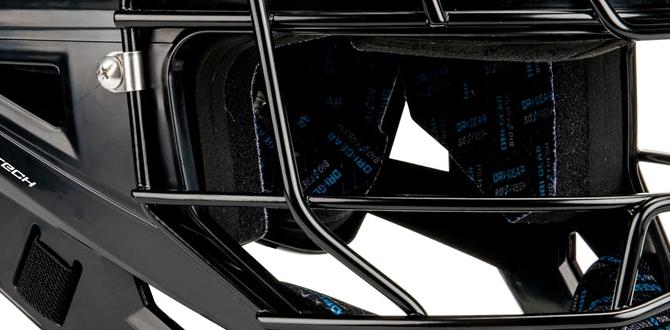A Force3 catchers throat guard offers crucial protection against impact, safeguarding young players and providing parents peace of mind. This guide breaks down why it’s essential and how it works.
Catching is an intense position. You’re right behind home plate, in the thick of the action. Sometimes, stray balls or even a bat can come your way, and that sensitive throat area is surprisingly vulnerable. It’s a worry for many parents and a reality every catcher faces. But what if there was a way to significantly boost your protection and confidence behind the plate? We’re talking about a specialized piece of gear designed to do just that: the Force3 catchers throat guard. This article will walk you through why this gear is so important and how it can keep you safer on the field.
Why Every Catcher Needs a Throat Guard
Catching is one of the most demanding positions in baseball. You’re constantly squatting, throwing, and blocking pitches. But the risks extend beyond just the physical strain. The area around your throat is incredibly delicate and crucial for breathing and speaking. A direct impact here can be incredibly painful and, in severe cases, can lead to serious injury.
Think about it – a foul tip can travel at considerable speed. A wild pitch can bounce unexpectedly. Even a swing and miss can turn into a dangerous situation. While some catcher’s masks have integrated throat protection, many don’t offer the robust defense that a dedicated throat guard provides. The Force3 catchers throat guard is engineered specifically to address this vulnerability, offering a targeted layer of defense that professional and amateur players alike can rely on.
The Danger Zone: Throat Injuries in Baseball
It’s easy to underestimate the danger to the throat when you’re focused on the game. However, this area is unprotected by bone and contains vital structures like the trachea (windpipe) and larynx (voice box). Injuries can range from painful bruising and swelling to more serious issues like fractures or internal damage. A sharp blow can cause difficulty breathing, vocal cord damage, or even an emergency situation requiring immediate medical attention.
The speed of a baseball, especially a foul tip which comes off the bat at an angle, can be significant. When this projectile meets a sensitive, unprotected area, the consequences can be severe. This is precisely why specialized protective equipment like the Force3 catchers throat guard isn’t just a good idea; it’s a critical component of a catcher’s safety gear.
Introducing the Force3 Catchers Throat Guard
Force3 stands out in the baseball equipment world for its commitment to player safety, particularly for catchers. Their throat guard is not just an add-on; it’s a thoughtfully designed piece of protective equipment built with advanced materials and a deep understanding of the stresses catchers endure. It’s designed to absorb and distribute impact, significantly reducing the force transmitted to the neck.
What makes Force3 different? They focus on innovation that directly benefits player protection. Their throat guard is often praised for its combination of lightweight design and superior impact resistance. This means you get maximum safety without feeling weighed down or restricted, allowing you to focus on your game, not your gear.
Key Features of Force3 Throat Guards
When you’re looking at catcher’s gear, specific features can make a big difference. The Force3 catchers throat guard is packed with innovations aimed at providing the best protection possible. Let’s break down what makes it a top choice:
- Advanced Impact Absorption: Utilizes proprietary materials designed to significantly reduce the shock from impacts. This is the core of its protective capabilities.
- Ergonomic Design: Shaped to naturally fit the contours of a catcher’s neck and mask, ensuring a comfortable and secure fit. It moves with you, not against you.
- Lightweight Construction: Despite its protective qualities, the Force3 guard is built to be as light as possible, preventing fatigue and allowing for better agility.
- Durability: Made with high-quality materials that can withstand the rigors of frequent use and hard impacts, offering long-lasting protection.
- Compatibility: Designed to work seamlessly with most major brand catcher’s masks, making it an easy upgrade for existing gear setups.
- Ventilation: Thoughtful design often includes ventilation to help manage heat, a common issue with catcher’s gear.
These features combine to create a piece of equipment that doesn’t just sit there; it actively works to protect you. It’s about smart design meeting critical need.
How a Force3 Throat Guard Protects You
The science behind the Force3 catchers throat guard is all about impact management. When a ball or bat strikes the guard, it doesn’t just block the force; it absorbs and disperses it across a larger area. This sophisticated process prevents the full, concentrated impact from reaching your vulnerable neck tissues.
Think of it like a well-designed crumple zone in a car. Instead of the impact hitting one spot hard, it’s spread out and lessened. Force3 often employs multi-layer systems or specialized foams that compress and rebound, effectively cushioning the blow. This is crucial for mitigating the risk of serious injury. It’s this advanced engineering that sets specialized gear apart.
The Science of Impact Absorption
Force3’s technology often involves materials that possess exceptional energy-absorbing properties. These aren’t just simple pads; they’re engineered composites. When an impact occurs, these materials deform in a controlled manner, converting the kinetic energy of the ball or bat into heat or a slower, more gradual deformation. This process significantly reduces the peak force experienced by the wearer.
Many modern protective gear manufacturers, like those whose research is funded by organizations dedicated to sports safety, invest heavily in understanding biomechanics and material science. The goal is to create barriers that are both incredibly strong on impact but also flexible enough to not impede movement. Force3’s approach aligns with this, focusing on a balance of strength, flexibility, and weight.
Choosing the Right Throat Guard: Force3 vs. Other Options
While the idea of throat protection is universal, the quality and effectiveness can vary. Some catcher’s masks come with basic plastic guards, which offer minimal protection against high-speed impacts. Others might have padded guards, but they may not have the advanced energy-absorbing technology that Force3 utilizes.
The direct comparison often comes down to the level of risk you’re mitigating and the technology employed. For younger players or those in low-impact leagues, a basic guard might suffice. However, for serious players, competitive leagues, or any situation where foul tips are a significant concern, investing in a specialized guard like the Force3 catchers throat guard becomes a wise decision. The Force3 catchers throat guard for kids is particularly important, as young players are still developing and may not have the same defensive instincts or physical resilience as older athletes.
Integrated vs. Add-On Guards
Many catcher’s masks come with a throat protector built-in. These are often made of hard plastic and are designed to deflect rather than absorb impact. While better than nothing, they typically don’t offer the advanced cushioning that a dedicated throat guard provides.
Add-on throat guards, like the Force3 models, are designed to attach to existing masks. They are typically made with more advanced padding and impact-resistant materials. This allows players to upgrade their current mask’s protection without needing to buy an entirely new setup. The Force3 catchers throat guard is a prime example of an effective add-on that can dramatically increase safety.
Pros and Cons: Force3 Throat Guard
To help you decide, here’s a quick look at the advantages and potential considerations:
| Pros | Cons |
|---|---|
| Superior impact absorption technology | Can be more expensive than basic guards |
| Enhanced safety for vital neck structures | May require specific attachment methods for some masks |
| Lightweight and comfortable for extended wear | Availability of specific models might vary |
| Durable construction for long-term use | |
| Improves player confidence behind the plate |
Installation and Fit: Making Sure It’s Right
Getting the right fit for any piece of protective gear is paramount. A throat guard that’s too loose won’t offer optimal protection, and one that’s too tight can be uncomfortable and restrictive. Force3 throat guards are designed for user-friendliness, but it’s still important to follow the fitting instructions.
Typically, these guards attach to the bottom of the catcher’s mask. They often use straps, clips, or a combination of both. The goal is to ensure the guard sits snugly against the chin and extends down to cover the throat area effectively without interfering with the player’s vision or ability to move their head. Referencing the manufacturer’s guide or seeking help from a coach or experienced player can ensure a perfect setup.
Step-by-Step: Attaching Your Force3 Throat Guard (General Guide)
While specific models may vary slightly, here’s a general guide to attaching a Force3 catchers throat guard:
- Inspect Your Mask: Look at the bottom framework of your catcher’s mask. Identify any attachment points, such as holes or clips.
- Unpack the Guard: Lay out your Force3 throat guard and familiarize yourself with its straps or attachment mechanisms.
- Position the Guard: Hold the throat guard up to the mask, aligning it with the intended attachment points. Ensure it is oriented correctly, with the main protective area facing downwards towards your throat.
- Secure the Straps/Clips: Attach the straps or clips to the designated points on the mask. Most guards will have adjustable straps to allow for a snug fit.
- Adjust for Fit: Once attached, adjust the straps so the guard feels secure but not overly tight. It should rest comfortably against your chin and cover your throat without pinching or restricting movement. You should be able to turn your head and breathe freely.
- Test for Movement: Gently move your head from side to side and up and down. The guard should stay in place and not shift significantly.
- Check Vision: Ensure the guard does not obstruct your downward vision when in a catching stance.
Always consult the specific installation instructions that come with your Force3 catchers throat guard for the most accurate guidance.
Force3 Catchers Throat Guard for Kids
For parents of young players, safety is often the top priority. Youth baseball leagues can be incredibly fast-paced, and young athletes are still learning the nuances of the game, including how to position themselves and react to different situations. This is where the Force3 catchers throat guard for kids becomes particularly valuable.
Children’s anatomy is different, and they may not always have the refined defensive skills of experienced players. A foul tip can be just as fast, if not faster, than in adult games. Providing them with robust, specialized protection like a Force3 throat guard can prevent serious injuries and build confidence, allowing them to develop their skills without constant worry.
Why Youth Catchers Need Extra Protection
Young athletes are still growing and developing. Their bodies are more susceptible to injury, and the long-term effects of a serious impact can be more significant. Furthermore, teaching proper safety habits from a young age is crucial. Introducing the Force3 catchers throat guard for kids instills the importance of protective gear and helps them understand that their safety is paramount.
From a coaching perspective, knowing that your young catchers are well-protected allows you to focus on their development and technique. It removes a significant potential distraction and concern, fostering a safer and more positive learning environment. The goal is always to encourage participation and skill development, and that starts with ensuring they feel safe.
Training Tips for Catchers
While gear like the Force3 catchers throat guard is essential for safety, proper training is what truly prepares a catcher. The fundamentals of the position are demanding, and focusing on technique can reduce the risks associated with these skills.
Good catching technique involves more than just receiving pitches. It includes proper stance, blocking, framing, and throwing. Here are a few key training areas:
- Stance: Develop a balanced, athletic stance that allows for quick movement in any direction.
- Receiving: Practice receiving pitches with soft hands, moving the glove to the ball and securing it. This minimizes passed balls.
- Blocking: Learn to block pitches in the dirt by getting your body in front of the ball, using your chest protector and legs as a barrier.
- Framing: Develop the skill of making borderline pitches look like strikes through subtle glove movement.
- Throwing: Work on quick transitions from catching to throwing, with accurate and strong throws.
The confidence gained from mastering these techniques, combined with the security of quality gear like a Force3 catchers throat guard, creates a well-rounded and effective player.
The Link Between Gear and Confidence
It’s amazing how much confidence good gear can instill. When a catcher knows they are well-protected with something like a Force3 catchers throat guard, they can focus more on the game and less on potential injuries. This can lead to more aggressive play, better decision-making, and ultimately, improved performance.
Similarly, having a reliable bat or comfortable cleats allows a player to feel more in sync with their equipment. When gear fits well and performs as expected, it becomes an extension of the athlete, not a distraction. This synergy is what separates good players from great ones, and it’s built on a foundation of smart equipment choices and dedicated training.
Maintaining Your Catcher’s Gear
Your catcher’s gear, including your mask, chest protector, shin guards, and throat guard, is an investment in your safety. Proper maintenance will ensure its longevity and effectiveness. Dirt, sweat, and impacts can all take a toll, so a little care goes a long way.
After each use, it’s a good practice to wipe down your gear. This removes dirt and prevents sweat from degrading the materials. For more thorough cleaning, use mild soap and water, and allow the gear to air dry completely. Avoid harsh chemicals that can damage padding or plastics. Check straps and fasteners regularly for wear and tear.
Cleaning Your Force3 Throat Guard
Cleaning your Force3 catchers throat guard is straightforward. The goal is to keep it clean without compromising its protective properties.
- Wipe Down: After every use, use a damp cloth to wipe away dirt and sweat.
- Mild Soap Solution: For tougher grime, mix a small amount of mild dish soap with water. Use a cloth dipped in this solution to gently scrub the guard.
- Rinse (if necessary): If you use soap, wipe the guard again with a clean, damp cloth to remove any residue.
- Air Dry: Always let the throat guard air dry completely. Do not place it in a dryer or use direct heat, as this can damage the materials. Store it in a cool, dry place.
- Inspect: Periodically check for any cracks, tears, or loose fasteners.
Proper care ensures your Force3 catchers throat guard remains a reliable piece of safety equipment.
Frequently Asked Questions (FAQ) about Force3 Catchers Throat Guards
Q1: Is a throat guard really necessary for youth catchers?
Yes, it is highly recommended. Youth catchers are still developing and may not have the same reflexes or strength as older players, making them more vulnerable to injuries from foul tips or wild pitches. A Force3 catchers throat guard provides essential protection.
Q2: How do I know if my Force3 throat guard is attached correctly?
It should feel snug against your chin and cover your throat area without restricting your vision or breathing. It shouldn’t shift significantly when you move your head. Always refer to the manufacturer’s specific attachment instructions for your model.
Q3: Can I put my throat guard in the washing machine?
No, it’s best to avoid washing machines and dryers. The harsh agitation and heat can damage the protective materials and fasteners of your throat guard. Gentle hand-washing with mild soap and water is the recommended cleaning method.
Q4: Will a Force3 throat guard fit any catcher’s mask?
Force3 throat guards are designed to be compatible with most standard catcher’s masks. However, it’s always a good idea to check the product specifications or try to attach it to your mask before purchasing to ensure a proper fit and secure attachment.
Q5: How often should I replace my throat guard?
You should inspect your throat guard regularly for any signs of wear, such as cracks, tears, or worn straps. If you notice any damage, or if the guard has been involved in a significant impact, it’s time to replace it to ensure continued protection.
Q6: Does the Force3 throat guard affect my ability to breathe or talk?
A properly fitted Force3 throat guard should not impede your breathing or talking. The design prioritizes protection while allowing for normal function. If you experience any restriction, it’s likely a fit issue that needs adjustment.
The Bottom Line: Investing in Safety
Baseball is a fantastic sport that offers incredible physical and mental benefits. For catchers, the




